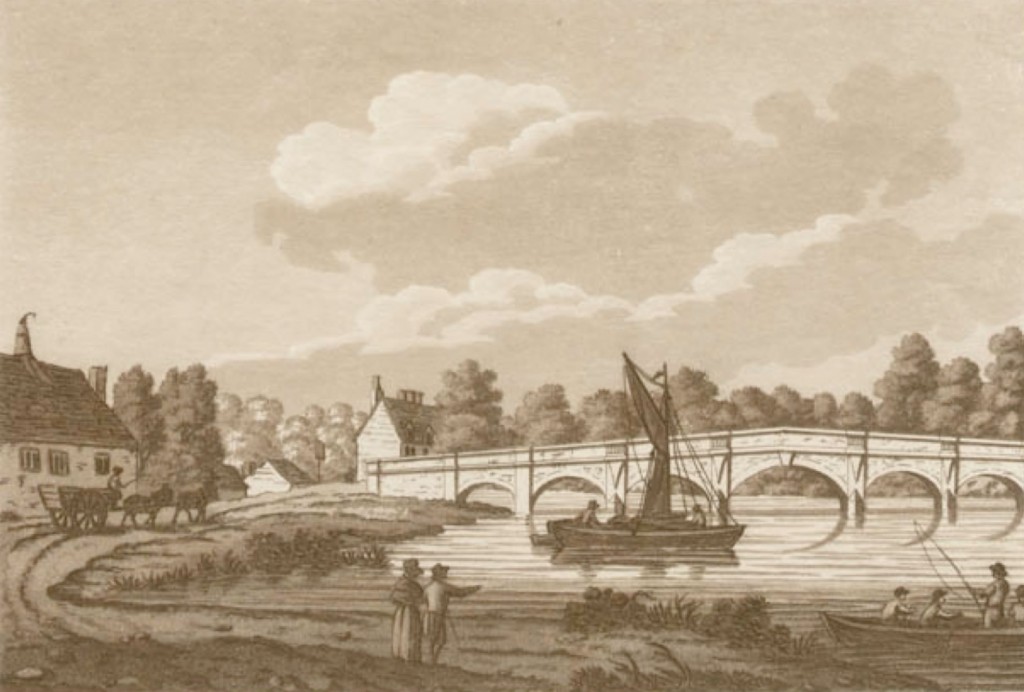The local bridges over the Thames are a vital part of our transport infrastructure, if often the focus of long queues of traffic. Many of them have a long and interesting history, and that between Shepperton and Chertsey is no exception.
The first bridge was built of timber in 1410 under a license granted by King Henry IV, and maintained afterwards by Chertsey Abbey until the dissolution of the Monasteries under Henry VIII. It was continually patched up and rebuilt until 1779, when a decision was taken to replace it in stone.
The new bridge was designed by James Paine, who lived at Sayes Court in Addlestone (he also designed bridges at Walton, Richmond and Kew), and a tender of £7,325 from Charles Brown of Richmond was accepted to build the bridge.
The keystone was laid by the Duke of Northumberland, Lord Lieutenant of Middlesex, and Lord Onslow, Lord Lieutenant of Surrey, on 26th June 1782. When the original five-arch design had been completed, it must have caused no little consternation when it was apparent that it didn’t reach to either bank!
It seems incredible that Paine should have made such a basic error, but it cost another £2,800 to extend the bridge by adding another arch on each side. It was finally completed in May 1785, and a stone inscribed ‘BEGUN 1780 FINISHED 1785’ was placed on the upstream side of the bridge. The materials of the old bridge were sold to Paine for £120.
The bridge achieved literary fame with a mention in ‘Oliver Twist’ by Charles Dickens (1839), in which Bill Sikes takes an unwilling Oliver on a burglary at Chertsey, and after passing through Sunbury and Shepperton, the pair approach Chertsey Bridge. Sikes drags Oliver off to one side, the boy fearing he is to be drowned, but Sikes’s intention is to spend part of the night in the ruined Back Swan pub (closed in 1816) which once stood on the Shepperton side of the bridge, before continuing on to the house they are to break into.
The bridge stills stands virtually unaltered from when it was built over 200 years ago, apart from the added street lights. It was however, extensively restored and strengthened in the 1990s to allow it to cope with the weight of modern motor traffic it was never designed for.
Nick Pollard will be telling the story of ‘The Thames Bridges from Staines to Kingston’, at the next meeting of the Sunbury and Shepperton Local History Society, at 8pm on Tues. 15th March. The meeting takes place in the theatre of Halliford School, Russell Road, Shepperton. All welcome, admission £2 for non-members of SSLHS.
A print of Chertsey Bridge dating from 1799, the Middlesex bank with the towpath is on the left. Chertsey Lock had yet to be built.

